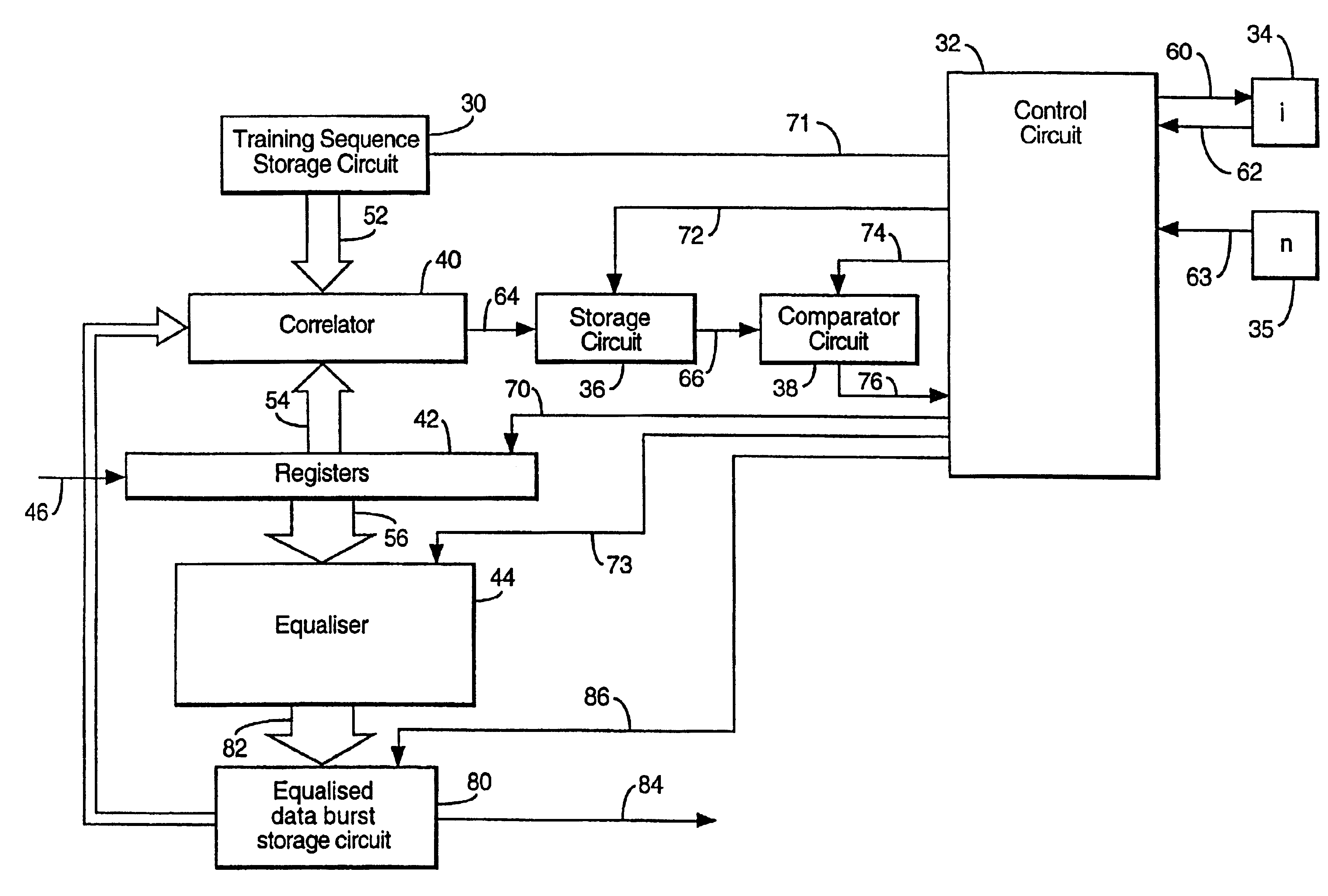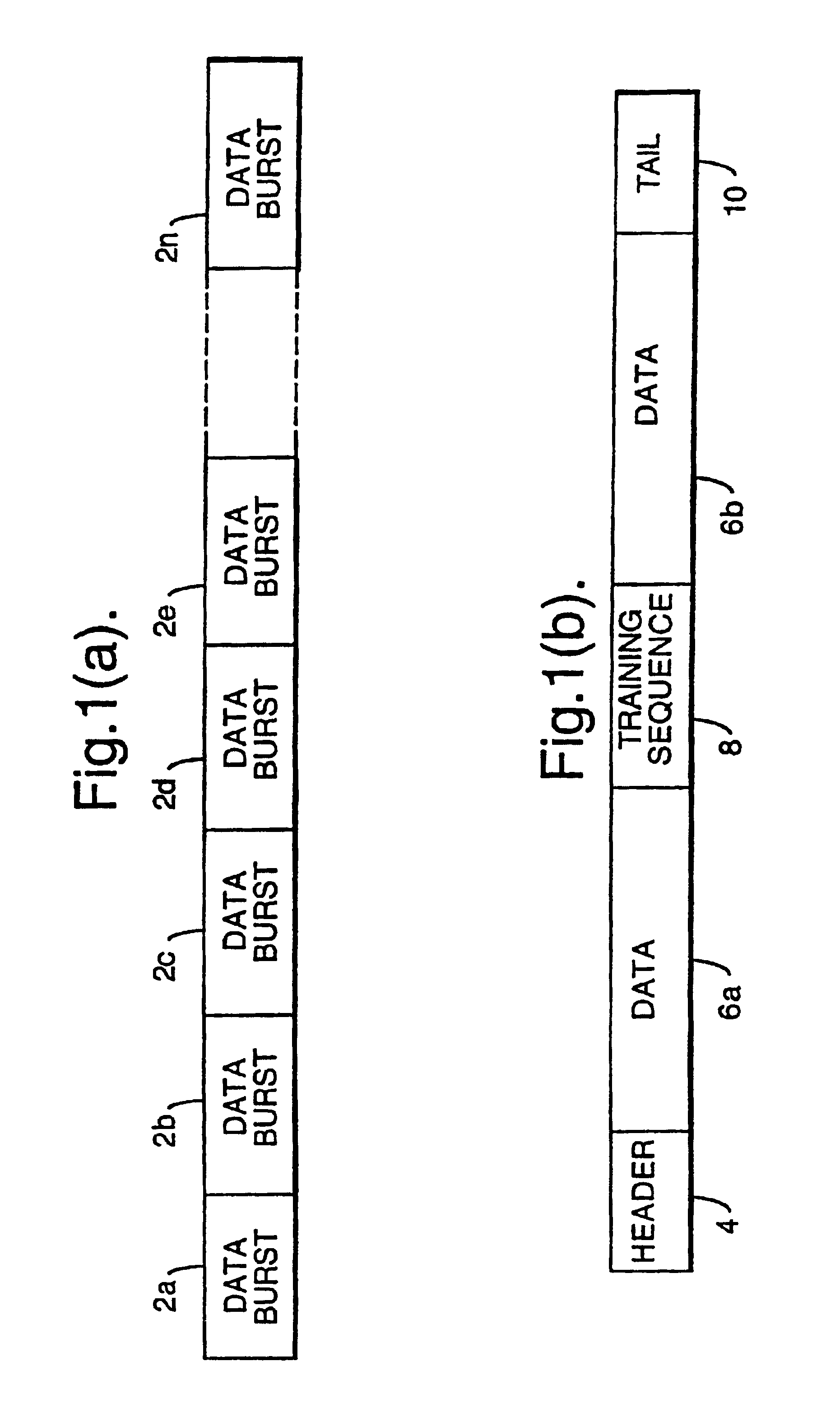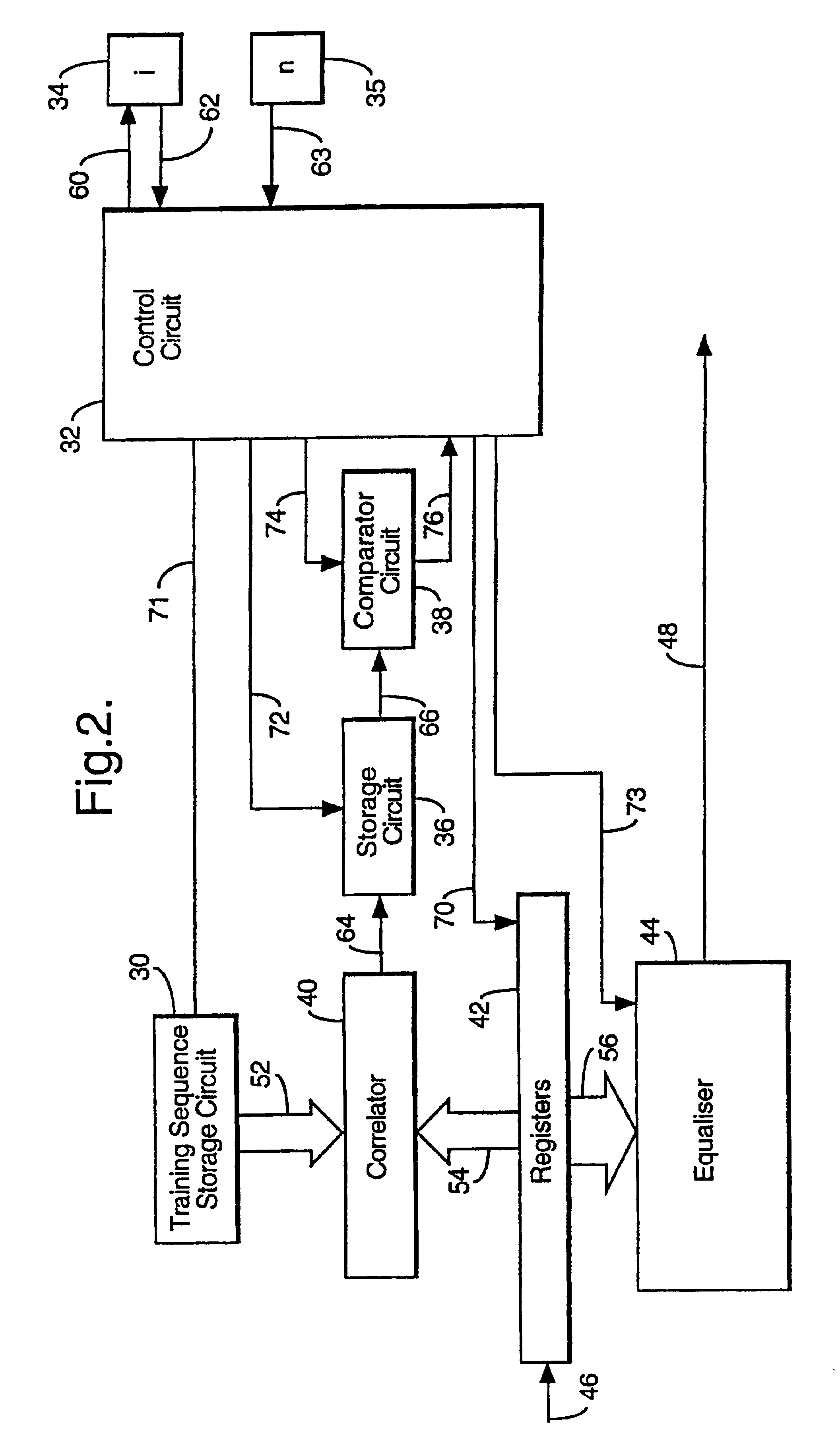Iterative estimation of timing in GSM bursts
- Summary
- Abstract
- Description
- Claims
- Application Information
AI Technical Summary
Benefits of technology
Problems solved by technology
Method used
Image
Examples
Embodiment Construction
Referring to FIG. 1(a) there is shown an overview of the basic structure of a typical GSM transmitted signal. As can be seen, the transmitted signal comprises a plurality of data bursts 2a to 2n. There are five different kinds of bursts in a GSM system: normal burst, synchronization burst, frequency correction burst, access burst, and dummy burst. Each burst is 156.25 bits long. The present invention applies to any burst containing a training sequence for equalizing the burst. The length of the training sequence varies according to the type of data burst. In a normal data burst the training sequence is 26 bits long.
In practice, transmitted messages are preceded by access bursts during the set-up phase of a transmission. The receiving station therefore initially seeks a training sequence of an access burst. Thereafter, the message includes a plurality of normal data bursts, and the receiving station seeks a training sequence of a normal data burst. The extraction of bursts from a tra...
PUM
 Login to View More
Login to View More Abstract
Description
Claims
Application Information
 Login to View More
Login to View More - R&D Engineer
- R&D Manager
- IP Professional
- Industry Leading Data Capabilities
- Powerful AI technology
- Patent DNA Extraction
Browse by: Latest US Patents, China's latest patents, Technical Efficacy Thesaurus, Application Domain, Technology Topic, Popular Technical Reports.
© 2024 PatSnap. All rights reserved.Legal|Privacy policy|Modern Slavery Act Transparency Statement|Sitemap|About US| Contact US: help@patsnap.com










